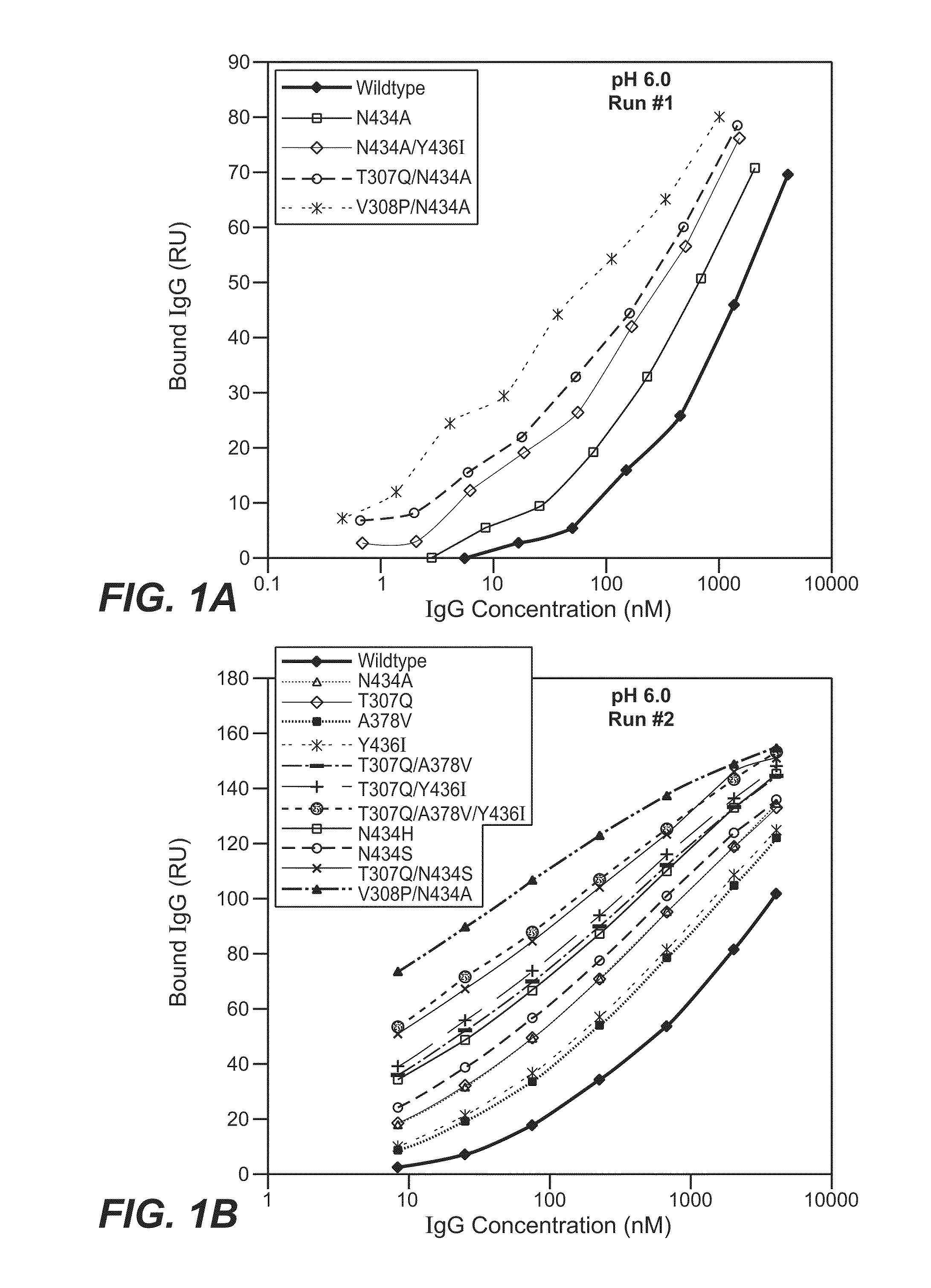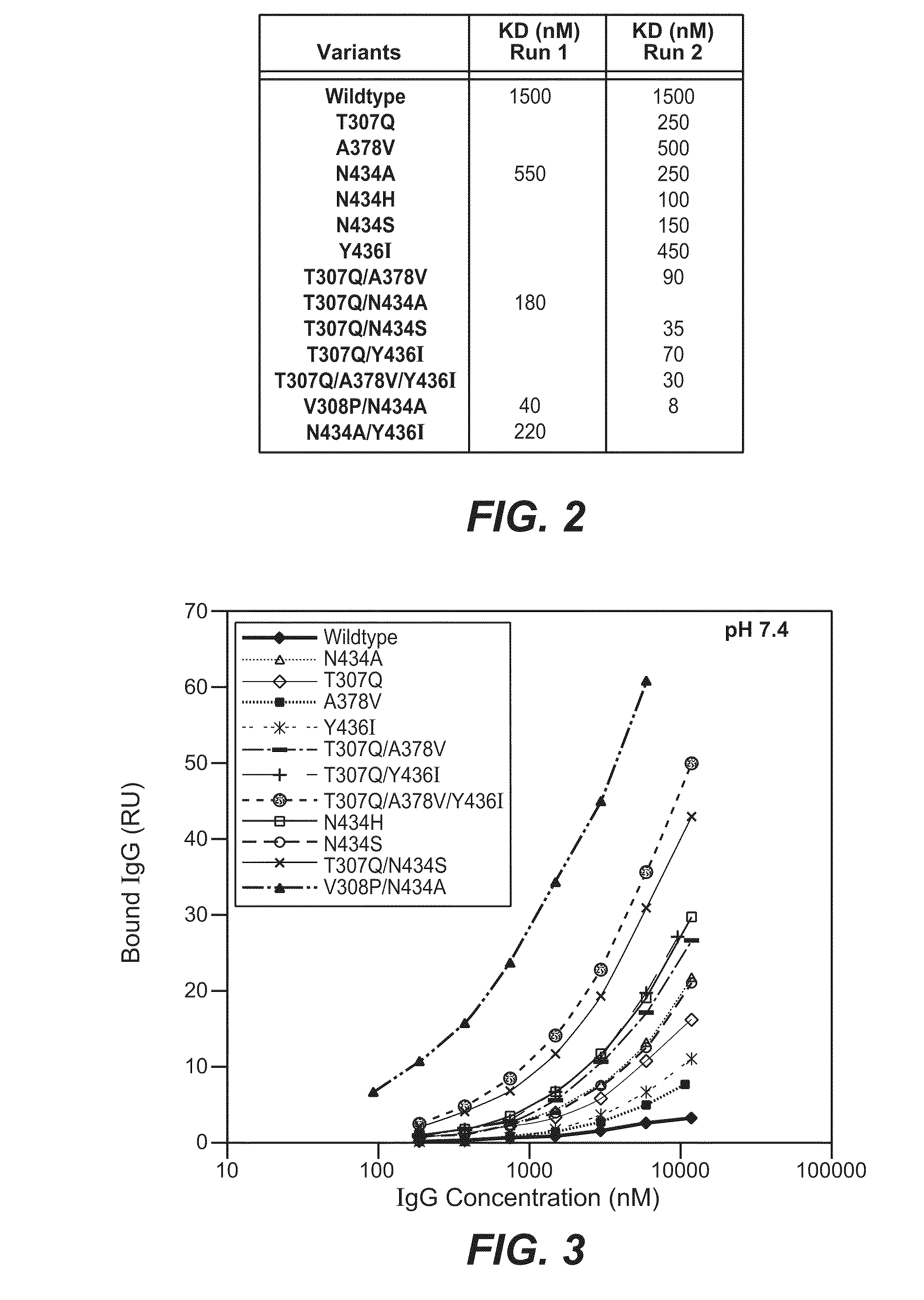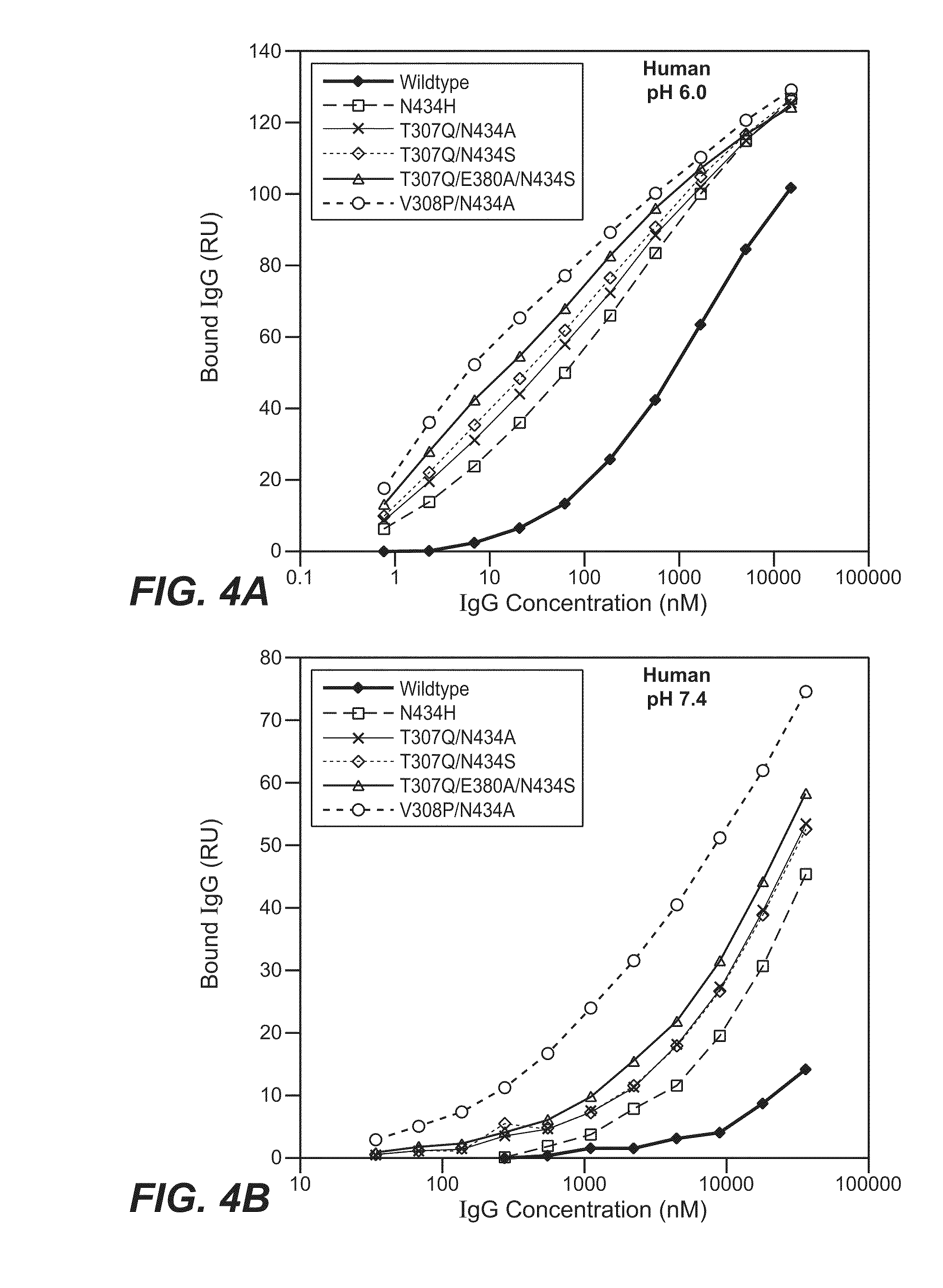Immunoglobulin variants and uses thereof
a technology of immunoglobulin and variants, applied in the field of molecular biology, can solve the problems of increasing medical costs, adverse effects on patients, persistence of immunoglobulins, etc., and achieve the effects of preventing or reducing the likelihood of cancer recurrence in the subject, preventing or reducing the likelihood of cancer recurrence, and preventing the recurrence of cancer
- Summary
- Abstract
- Description
- Claims
- Application Information
AI Technical Summary
Benefits of technology
Problems solved by technology
Method used
Image
Examples
example 1
Production of Anti-VEGF (Bevacizumab) Variants
[0432]The Fv regions of wild-type anti-VEGF (Bevacizumab) IgG1 heavy and light were cloned separately into two pRK-based transient transfection plasmids containing human IgG1 constant domains. Kunkel based site-directed mutagenesis was then used to generate all the anti-VEGF IgG1 variants in which residues in the CH2 and CH3 domains were mutated. The anti-VEGF variants generated in this study are summarized in Table 2 below. Each variant contains either single, double and triple mutations in the CH2 and CH3 domains. Variants are numbered according to the EU index as in Kabat.
TABLE 2IgG1 VariantT307QA378VN434AN434HN434SY436IT307Q / A378VT307Q / N434AT307Q / N434ST307Q / Y436IT307Q / A378V / Y436IT307Q / E380A / N434SV308P / N434AN434A / Y436I
[0433]Plasmids containing the variants' heavy chain and wildtype light chain were co-transfected into the adenovirus-transformed human embryonic kidney cell line 293 by FUGENE® (Roche, Basel, Switzerland) according to th...
example 2
Production of Human and Cynomolgus Monkey FcRn
[0434]Human FcRn is a heterodimer of an alpha chain and a β2-microglobulin subunit. These two subunits were cloned separately into two pRK based transient transfection plasmids. Plasmids containing both alpha chain and a β2-microglobulin were co-transfected into 293 cells using FUGENE® (Roche, Basel, Switzerland) according to manufacturing protocol. After 24 hour of incubation with the transfection complexes, transfected cell were then switched to serum free media PSO4 supplemented with 10 mg / L of insulin and trace elements for 5 days. Collected supernatant were filtered, and conditioned with 1M hydrochloric acid and 5M NaCl to give a final pH of 6.0 and concentration of 50 mM NaCl. Conditioned supernatant were purified using IgG-sepharose chromatography. Bound FcRn was eluted from the column using a pH 8.0 buffer containing 30 mM TRIS and 150 mM NaCl. Eluted FcRn were further purified using a Superdex-75 size exclusion chromatography co...
example 3
FcRn Binding Studies: Injection of IgG1 Variants Over FcRn
[0435]The binding of anti-VEGF variants against human FcRn were studied by surface plasmon resonance using a BIAcore 3000 instrument (GE healthcare, Piscataway, N.J.). Human FcRn was coupled to the sensor chip using an amine coupling kit. Specifically, CM5 sensor chip was activated with EDC / NHS for 7 min at 5 μl / min. 100 μg / ml of human FcRn were injected for 30 sec to 2 min at a flow rate of 10 μl / min over the activated chip to give a maximum binding response unit (RU) of 50 to 200. After conjugation, FcRn coupled chip was blocked by an injection of 35 μl of 1M ethanolamine hydrochloride at 5 μl / min.
[0436]The anti-VEGF wildtype (WT) and anti-VEGF variants' binding to human FcRn at pH 6.0 or pH 7.4 were determined. The running buffer for the binding experiment is either PBS pH 6.0 or pH 7.4 containing 0.01% P20 and 0.02% sodium azide. Anti-VEGF (Bevacizumab) WT and anti-VEGF variants were buffer-exchanged into either pH 6.0 or...
PUM
| Property | Measurement | Unit |
|---|---|---|
| pH | aaaaa | aaaaa |
| pH | aaaaa | aaaaa |
| half life | aaaaa | aaaaa |
Abstract
Description
Claims
Application Information
 Login to View More
Login to View More - R&D
- Intellectual Property
- Life Sciences
- Materials
- Tech Scout
- Unparalleled Data Quality
- Higher Quality Content
- 60% Fewer Hallucinations
Browse by: Latest US Patents, China's latest patents, Technical Efficacy Thesaurus, Application Domain, Technology Topic, Popular Technical Reports.
© 2025 PatSnap. All rights reserved.Legal|Privacy policy|Modern Slavery Act Transparency Statement|Sitemap|About US| Contact US: help@patsnap.com



